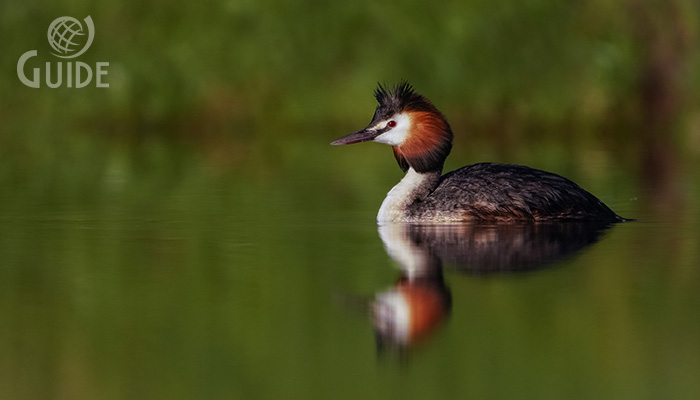
English: Great
Crested Grebe
Russian: Большая поганка
German: Haubentaucher
French: Grebe huppe
Mongolian: Отгот шунгуур
Japanese: カンムリカイツブリ(Kanmuri-kaitsuburi)
Body length: 46-51 cm
Wing span: 59-73 cm
Passage migrant
Breeding season: May-August
Egg number: 4 (occasionally 3-6)
Egg color: Non-glossy white
Global Status: Least Concern
Regional Status: Least Concern
Food: Aquatic invertebrates, small fishes,
rarely frogs and plant matter.
Habitat: Breeds commonly on reeded larger waters. In
winter, offshore or on lakes, reservoirs, mostly in W Europe. Not shy, spends
much time openly on unvegetated waters. Nest a large mound or reed stems.
Identification: Largest
and most familiar grebe in most of Europe. Shape distinctive: long low body and
long slender neck either held erect or (when inactive) lowered with head
resting in mid-back; bill long, slim and more extensively pale than other
grebes. In flight, exceptionally long skinny outline with flickering wing beats,
slightly stern-heavy, and blackish upcurled feet projecting; white secondaries
and shoulder patch prominent.
Adult summer: Unmistakable;
head plumes held compressed when alert, or raised, fanned and vigorously shaken
in head-to-head courtship displays which climax in ‘penguin dance’ in which
pair-members raise whole body upright, breast to breast Bill reddish-pink.
Adult winter: Head,
foreneck and flanks more extensively white than on other grebes, with white
above eye and black oral line from eye to bill.
Juvenile: Striped
cheeks; bill pale pink.
1st summer: Head
plumes are incomplete or lacking.